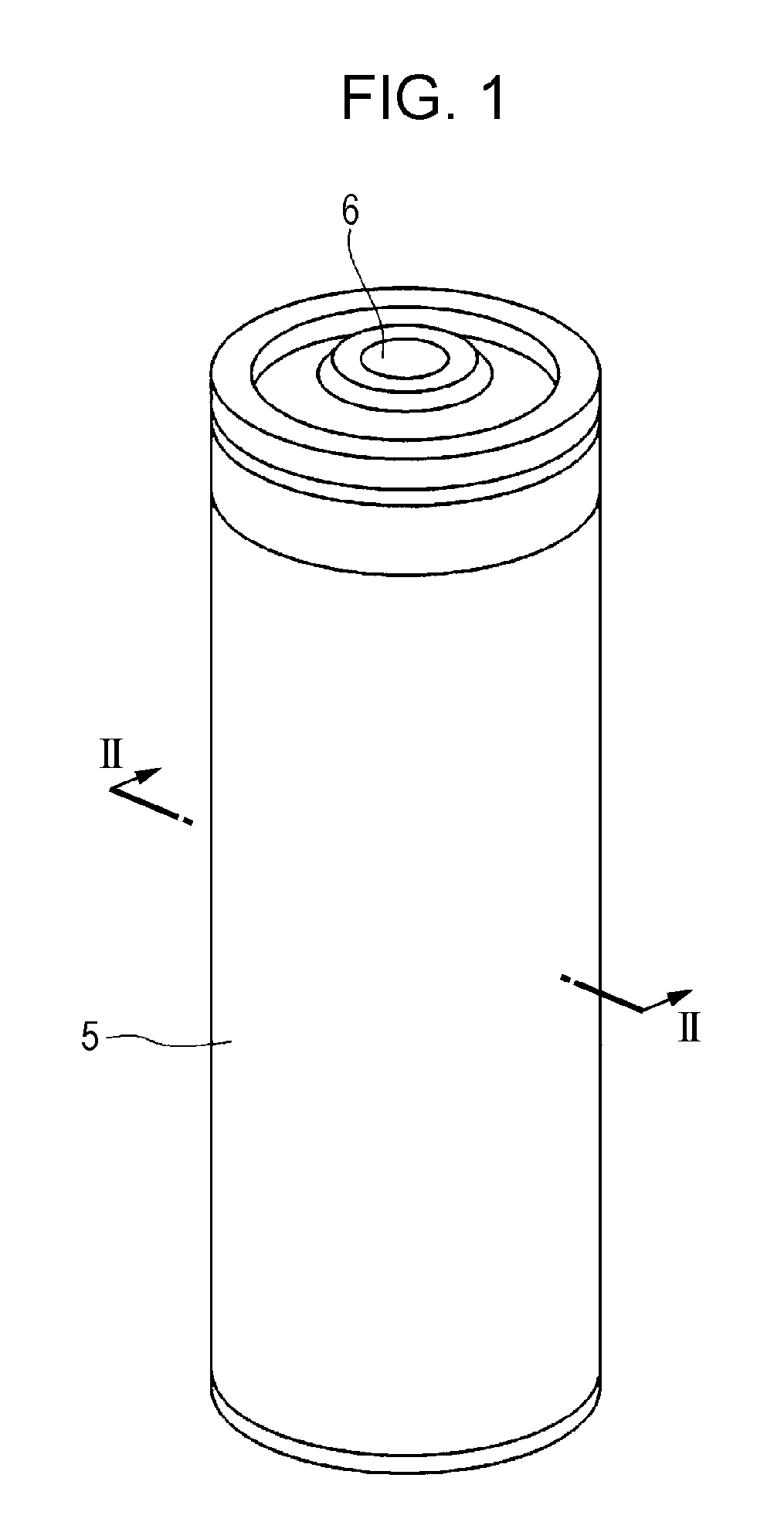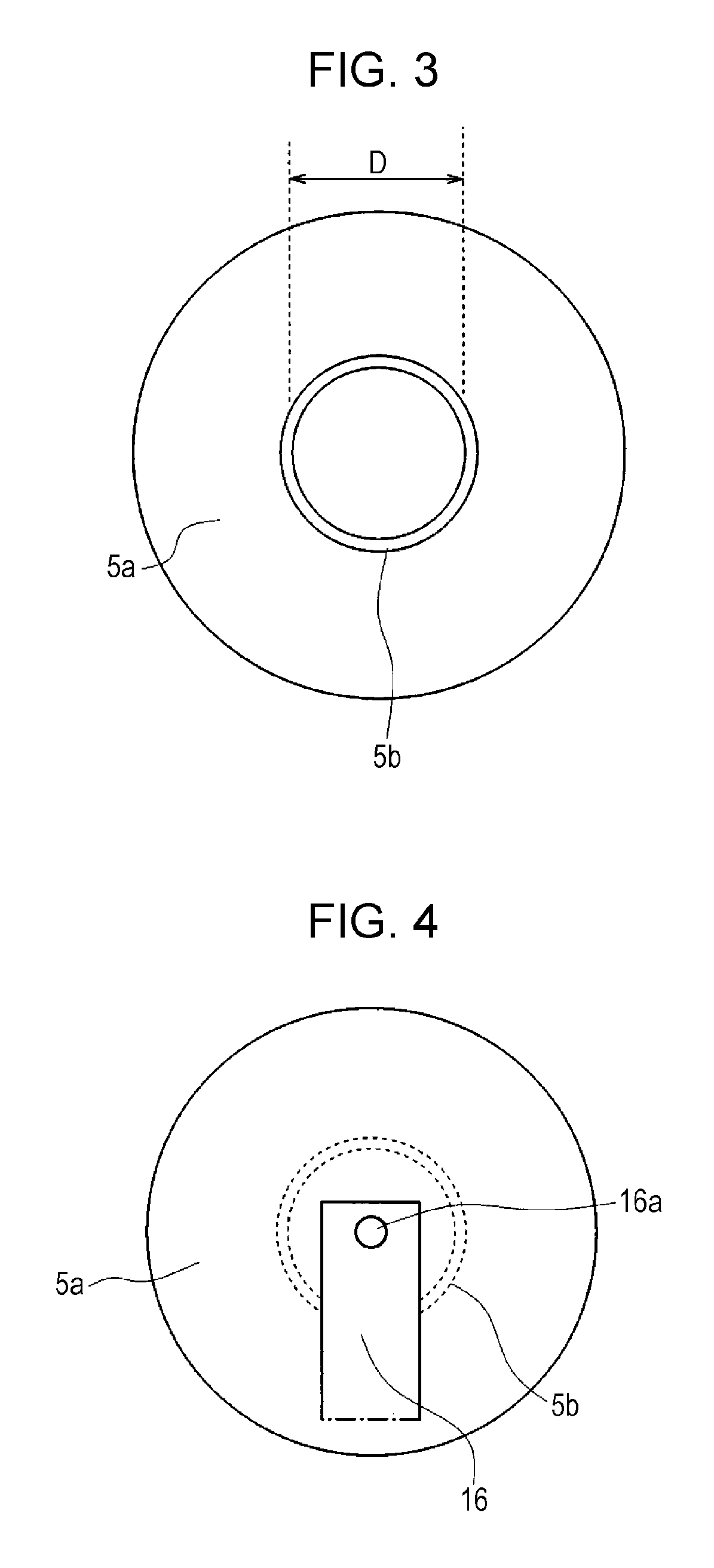Nonaqueous electrolyte secondary batteries
a technology of nonaqueous electrolyte and secondary batteries, which is applied in the direction of cell components, final product manufacturing, sustainable manufacturing/processing, etc., can solve the problems of ni-rich positive electrodes, marked decrease in initial efficiency, and decrease in initial efficiency
- Summary
- Abstract
- Description
- Claims
- Application Information
AI Technical Summary
Benefits of technology
Problems solved by technology
Method used
Image
Examples
example 1
[Fabrication of Positive Electrode]
[0059]Lithium-containing transition metal oxide LiNi0.50Co0.20Mn0.30O2 was used as a positive electrode active material. The active material, acetylene black and polyvinylidene fluoride were mixed together in a mass ratio of 96:2:2. An appropriate amount of N-methyl-2-pyrrolidone (NMP) was added to the mixture. A positive electrode mixture slurry was thus prepared. Next, the positive electrode mixture slurry was applied to both sides of an aluminum foil as a positive electrode current collector. The wet films were dried and rolled with a roller. In this manner, a positive electrode 1 was fabricated which had the positive electrode active material layers on both sides of the positive electrode current collector. The packing density of the positive electrode 1 was 3.4 g / cm3.
[Fabrication of Negative Electrode]
[0060]Artificial graphite, carboxymethylcellulose sodium (CMC-Na) and styrene-butadiene copolymer (SBR) were mixed together in a mass ratio of 9...
example 2
[0068]A battery A2 was fabricated and was tested to evaluate the initial efficiency, the discharge characteristics at −5° C., the high-temperature storage characteristics and the high-temperature over-discharging characteristics in the same manner as in Example 1, except that vinylene carbonate (VC) was further added to the nonaqueous electrolytic solution in an amount of 1 mass % relative to the total mass of the nonaqueous electrolytic solution.
example 3
[0071]A battery A3 was fabricated and was tested to evaluate the initial efficiency, the discharge characteristics at −5° C., the high-temperature storage characteristics and the high-temperature over-discharging characteristics in the same manner as in Example 2, except that the nonaqueous solvent was changed to a mixed solvent including FEC, PC and FMP in a volume ratio of 15:5:80.
PUM
| Property | Measurement | Unit |
|---|---|---|
| mass % | aaaaa | aaaaa |
| thickness | aaaaa | aaaaa |
| thickness | aaaaa | aaaaa |
Abstract
Description
Claims
Application Information
 Login to View More
Login to View More - R&D
- Intellectual Property
- Life Sciences
- Materials
- Tech Scout
- Unparalleled Data Quality
- Higher Quality Content
- 60% Fewer Hallucinations
Browse by: Latest US Patents, China's latest patents, Technical Efficacy Thesaurus, Application Domain, Technology Topic, Popular Technical Reports.
© 2025 PatSnap. All rights reserved.Legal|Privacy policy|Modern Slavery Act Transparency Statement|Sitemap|About US| Contact US: help@patsnap.com



